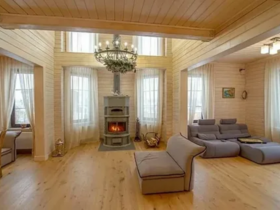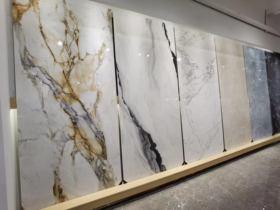The kitchen is such a place in every apartment where food is prepared, dishes are washed, water is often used. Such conditions of high humidity can quickly ruin the decorativeness of any material that is susceptible to water. And the fat particles secreted during frying can finally ruin the ceiling trim, which will smoke and turn on even if the repair was carried out not so long ago.
So that the kitchen does not lose its appearance, and remains beautiful and cozy longer, it is necessary to repair the ceiling in the kitchen, using only high -quality and practical materials. Firstly, they should be resistant to moisture, secondly, not to be afraid of temperature extremes and, thirdly, wash well.
Previously, the ceiling repair in the kitchen was made either with whitewashing or emulsion paint. The disadvantage of these materials is that their use requires cleaning the surface. In addition, they do not differ in durability, especially for whitewashing, which turns yellow over time.
If you still decide to make a kitchen repair using these materials, then give preference to moisture-resistant paint. Before painting, align the surface and put all the cracks with putty. Although this work is laborious, it is less financially costly compared to other types of decoration. This coating is best for kitchens with low ceilings.
You can make the ceiling repair in the kitchen using drywall. With it, it is possible to create not only good sound insulation, but also an unusual ceiling shape. It is from drywall that perfectly smooth multi -level ceilings are created. On them you can embed lamps, as well as conduct communications and ventilation. The only disadvantage is that drywall must be puttled and painted.
Recently, it is fashionable to repair the ceiling in the kitchen using suspended ceilings. Their installation is quite simple: panels, rails, slabs are attached to the frame attached to the ceiling. True, when they are installed, the height of the kitchen becomes lower by 5-7 cm, but there are advantages here: firstly, all the ceiling defects are hidden, and secondly, it is convenient to mount lighting and the necessary engineering communications, thirdly, sound insulation improves. To improve sound insulation under the suspended ceiling, you can place polyurethane foam, foam or mineral wool.
But stretch ceilings are especially popular. The material from which they are produced (polyvinyl chloride) is durable, reliable and moisture -resistant. Such ceilings do not burn out, do not form condensate, easily wash, do not absorb odors at all and do not deform, which significantly distinguishes the next repairs of the ceiling in the kitchen. They can also install beautiful backlight and ventilation in them. And a large selection of colors and textures makes suspended ceilings the most beautiful and in demand among other existing types of ceiling sections.













Оставить коммент.